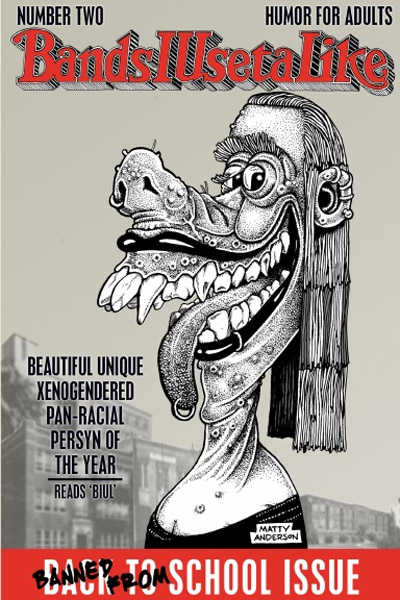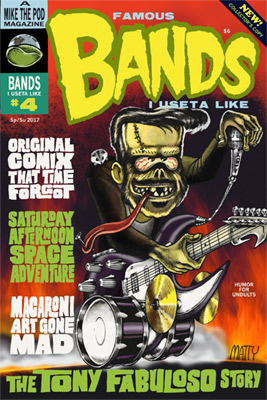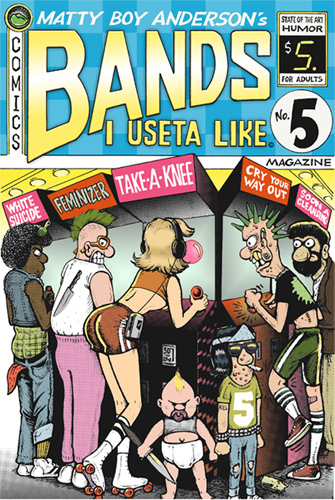
Who are these broads?
“The album’s cover was done by Hipgnosis. Dennis DeYoung stated in the same 1991 interview with Redbeard on the In the Studio episode that he initially hated the cover but grew to like it as he got older.”
I guarantee that DeYoung saw the cover and surmised that consumers would think that the women pictured were the act. Yeah, I get it, it’s three stages in a woman’s life. Is there a part of the album I missed that evoked that? And what’s with the Easter Island earrings?
Hipgnosis was great and all, but not immune to the occasional dud; look at Def Leppard’s High and Dry. But listen to the opening track of Pieces of Eight; wouldn’t this inspire more interesting/intriguing material for an album cover?
Look at Styx’s equally-profitable previous album, The Grand Illusion, from 1977. The cover is a reference to Magritte, rendered by veteran rock artists Alton Kelley and Stanley Mouse. Here’s an image you can sink your eyeteeth into:

Even Styx’s tenth (tenth!) album, 1981’s Paradise Theatre (conceptualized totally by DeYoung), had an intriguing and appropriate cover. There’s more than enough here to gaze at while taking in the eleven songs included.

1983 of course came with Kilroy Was Here. Honestly it looks like a discount Daft Punk disc. The concept is laid on heavier than lead:
[Wikipedia]
The album’s somewhat rock-operatic story tells of a future where rock music is outlawed by a fascist and theocratic government and the “MMM (the Majority for Musical Morality)”. The story’s protagonist, Robert Orin Charles Kilroy (DeYoung), is a former rock star who has been imprisoned by MMM leader Dr. Righteous (Young). He escapes using a disguise (according to the album’s famous song “Mr. Roboto”) when he becomes aware that a young musician, Jonathan Chance (Shaw), is on a mission to bring rock music back.
Subtle, no? It’s also fitting that DeYoung plays a “former rock star”, and Tommy Shaw is “on a mission to bring rock music back”. That’s an allegory for the tensions that had formed within this legendary band.
[Wikipedia]
The album debuted at #10 on the Billboard 200 in its first week and sold over 1 million copies (although some sources say 2.5 million copies) and peaked at #3 on the US charts; however, it broke the streak of multi-platinum albums for Styx, and ushered in a more keyboard-oriented, theatrical direction. In an interview with the Chicago Tribune, James Young talked about the creative differences in the band, and what led to their breakup: “Dennis really wanted to do these soft, intimate love ballads, and that was against the grain for me and Tommy Shaw, so our differences got magnified, because Dennis was insisting on going outside the boundaries we lived with. He’s an assertive and strongly opinionated guy.”

“Kilroy”, the graffiti symbol dating back to World War II, is an early form of “meme”; its UK equivalent was even called “Chad”. Some claim it was inspired by Alice the Goon from “Popeye”; some say it was a modified omega. Kilroy might even have been a circuit diagram of a band-stop filter, as Thomas Pynchon suggested in V.:

[Wikipedia]
The figure was initially known in the United Kingdom as “Mr Chad” and would appear with the slogan “Wot, no sugar” or a similar phrase bemoaning shortages and rationing. He often appeared with a single curling hair that resembled a question mark and with crosses in his eyes. The phrase “Wot, no —?” predates “Chad” and was widely used separately from the doodle. Chad was used by the RAF and civilians; he was known in the Army as Private Snoops, and in the Navy he was called The Watcher. Chad might have first been drawn by British cartoonist George Edward Chatterton in 1938. Chatterton was nicknamed “Chat”, which may then have become “Chad.” Life Magazine wrote in 1946 that the RAF and Army were competing to claim him as their own invention, but they agreed that he had first appeared around 1944.
The cover of the Rolling Stones’ Beggars Banquet also references this, with its scrawl of “Wot, no paper?” The phrase permutated over the years, inspiring an even more well-known motto for MAD magazine’s gap-toothed mascot:
“What, me worry?”
-Alfred E. Neuman
It could be argued that Styx, despite their internal troubles, created an indelible catchphrase of their own.
(It blows compared to “Blue Collar Man”, however.)










You must be logged in to post a comment.